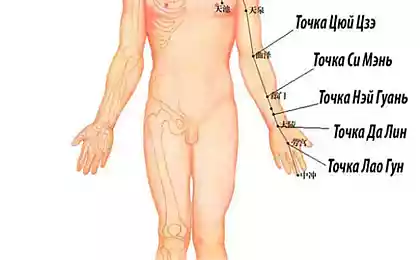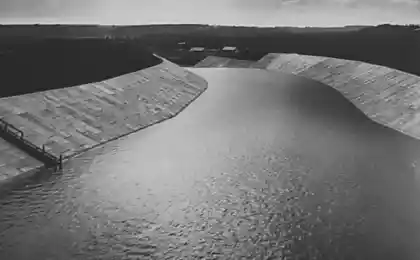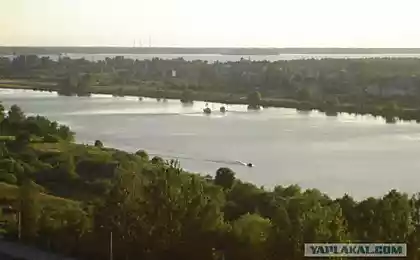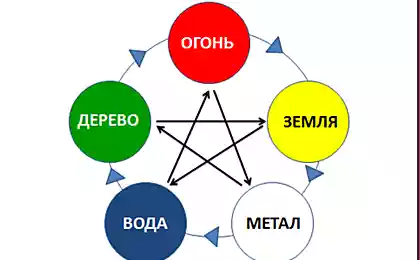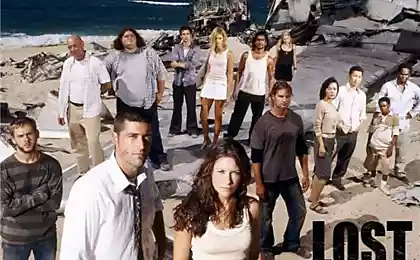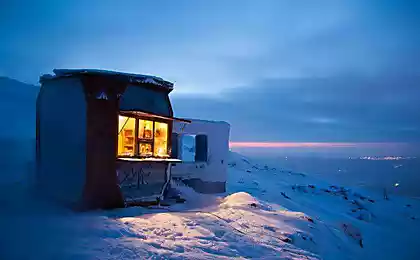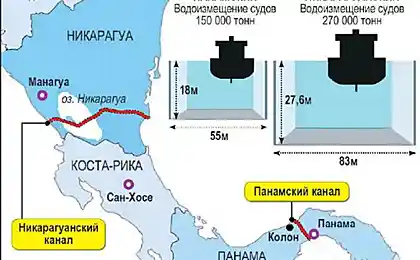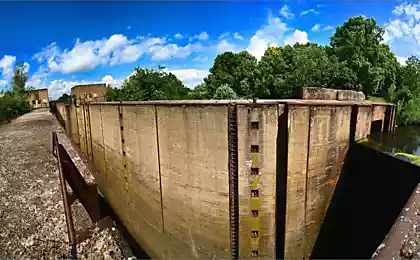1358
Panama Canal
The history of the Panama Canal begins in XVI, when the Spaniard Vasco Nunez de Balboa crossed the Isthmus of Panama first and went to the Pacific coast. That's when it was discovered that the territory of modern Panama is a narrow strip of land between the oceans. The construction of the Panama Canal has become one of the most important milestones in navigation. I suggest you go with the author to the territory of the Panama Canal and perhaps learn a lot.
The first real attempt to build the Panama Canal was undertaken by the French in 1879 under the leadership of Ferdinand de Lesseps, diplomat and head of the project of the Suez Canal, which was opened shortly before, in 1869. But the construction of the Panama Canal was much more challenging. In 1889, the French project went bankrupt - too complicated was the challenge that was thrown Panamanian jungle with its tropical storms, impassable swamps and at the same time rocky ground, floods and that the most terrible, deadly epidemics of malaria, yellow fever, plague, typhus and other diseases that claimed the lives of about 20 thousand people in the first campaign.
Then, for the construction of the Panama Canal took States. The United States was interested in reducing the waterway from the ports of California to its Atlantic coast, and most importantly, the Panama Canal was a huge military significance - he allowed almost instantly throw the fleet from one ocean basin to another, which greatly increased the power and influence in the world States. In 1903, the United States bought the Panamanian project from the French secured Panama's independence from Colombia, who did not want to give the Americans the Canal Zone in essentially unlimited time, and then signed a formal agreement with the new Panamanian government (which is, again, the Frenchman Philippe-Jean Byuno -Varilya, who was one of the main participants of the first draft of the bankrupt). United States agreed to provide 5-kilometer zone on each side of the canal in perpetuity (ie, essentially forever), and the exclusive right to occupy a territory outside the zone as part of any measures for the protection of the waterway. Thus, the announcement channel neutral and guarantee free passage through the channel of the military and merchant ships of all nations both in peacetime and in time of war to destroy the US reservation that these regulations will not apply to those measures which the United States deemed it necessary to take for the protection of Panama and maintaining order in the channel. In fact, during the war, which would be attended by the US, to strengthen their military inevitably deprive other belligerents possible to use the channel on an equal footing.
The chief engineer of the Panama Canal was John Frank Stevens. Taking into account the errors of the French, the Americans in the first place made great steps to disinfect the construction zone and the prevention of tropical diseases. It has been changed and the project - the project of the French Panama Canal, as well as Suez, was supposed to build on the same level with the oceans, without locks. It took enormous amount of excavation work on the watershed area of the track. American engineers have changed the project and offered the sluice channel with three levels of locks on each side and watershed areas at an altitude of 26 meters above the ocean. On the watershed Gatun Reservoir was created, in which the court with the Atlantic side up into the Gatun locks, and from the Pacific - in Pedro Miguel locks and Miraflores.
The Panama Canal was opened in 1920 and for many years remained under US control. In the Canal Zone were dozens of US military bases, there were about 50 thousand military and civilian personnel. Over time in Panama began to grow more and more discontent regarding this, and in 1977 signed an agreement on the gradual transfer of the Panama Canal from the United States to Panama. In fact, this process took more than two decades, and finally the zone of the channel came into the possession of Panama December 31, 1999.
The length of the channel 81, 6 kilometers, of which 65 km 2 of land, and in fact still 16, 4 kilometers along the bottom of the approach and the Panama Limon bays to deep water. Court dimensions that they can pass through the Panama Canal, the courts are called class «Panamax». This standard is the basis for ships until the early 1990s, when the active construction of ships of class «Post-Panamax» (mainly tankers), whose dimensions are larger than the size of locks of the Panama Canal. Today, the cost of the passage of the Panama Canal depends on the type and size of vessel, ranging from $ 800 for small boats up to 500 000 dollars for the biggest ships. There were anecdotes - so, in 1928 with the famous American traveler Richard Halliburton, swam across the channel from one ocean to the other, they took 36 cents. :)
Panama Canal today - is not only one of the world's major transport links and major tourist attractions of Panama. When the Panama Canal now operates a major tourist center at the Miraflores Locks, where several special viewing areas to watch the floodgates and pass their vessels, while at the speaker tells about each vessel, its route and that it carries. There are other tours - by bus along the canal, rail, walking in small boats; in some standard cruises in the Caribbean cruise ships through the locks of Gatun on the Atlantic slope of the rising channel to the watershed area, and then sent back to the Caribbean (and willing tourists can walk the rest of the Panama Canal by boat as part of the tour). But, of course, the best, unique and entuziastsky way to see the Panama Canal - a transit pass him completely on a cruise ship, go to him from the Atlantic to the Pacific (or vice versa), and continue to cruise further into a very different ocean basin. Absolutely everything, even the most seasoned travelers prepare for the passage of the Panama Canal quite peculiar.
Just passing the Panama Canal takes an average of about 9 hours, not counting the time waiting ships on the huge sea raids on each side. Cruise ship, of course, there is a clear schedule, and sent to the channel immediately, out of the lineup. «Zaandam» approaches to the Panama Canal Zone around 5am. Entrance to the large waters of the approach of the Panama Canal from the Caribbean is marked by powerful beacons and is protected by kilometers of dykes. At the entrance to the channel in the roads waiting for their turn are dozens of ships of all sizes and colors, brightly lit at night. And on the shore of the bay is the city and port of Colon, with a huge container terminal. The same container terminal is located, and the other input channel - thus, container class «Post-Panamax» (ie larger than locks of the Panama Canal) unloaded in these input ports, cargo containers transported by passing along the channel rail and then on the other side of the sink for new ships, and continue the route. Also the railway between the port is used for partial unloading of large container ships passing through the canal, to reduce their deposits.
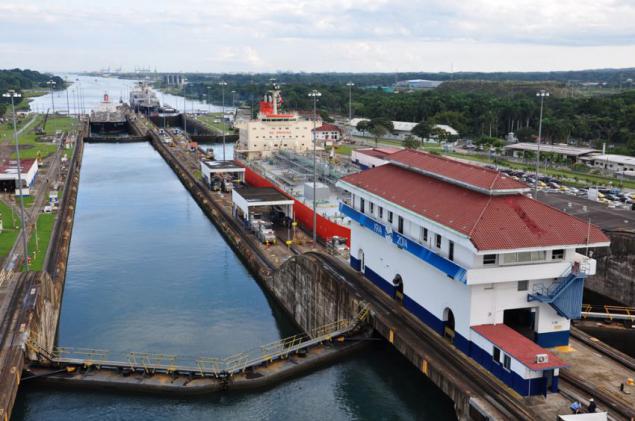
Five in the morning, just beginning to get light, but most tourists already on their feet: the entrance to the Panama Canal - one of the central events of the cruise! We go in the water area of the approach, with the side to see the lights predawn Port Columbus.
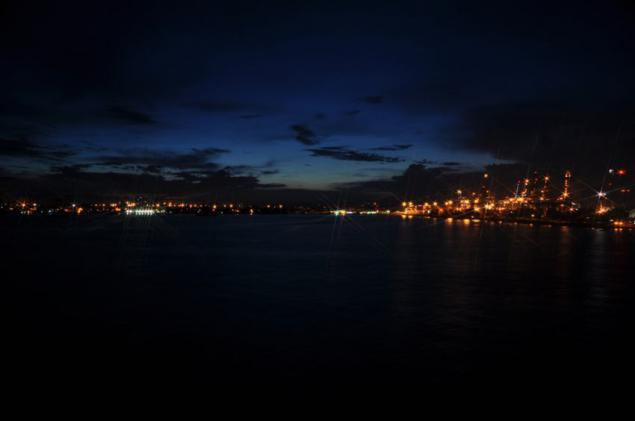

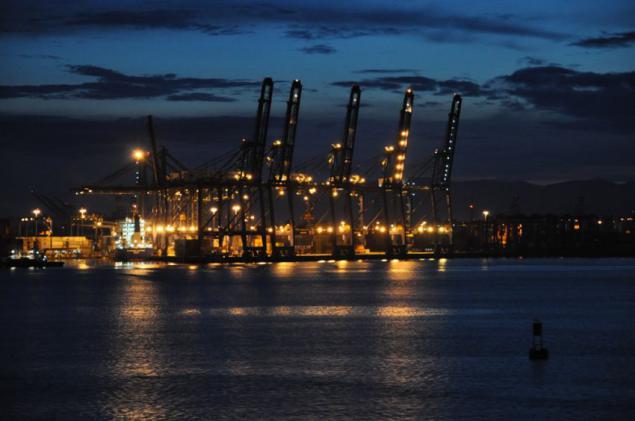
Having a group of pilots on board, heading to the door - from the Caribbean Panama Canal begins three-stage ladder Gatun locks, in which the Court raised from the level of the Atlantic Ocean in the watershed portion of the channel.
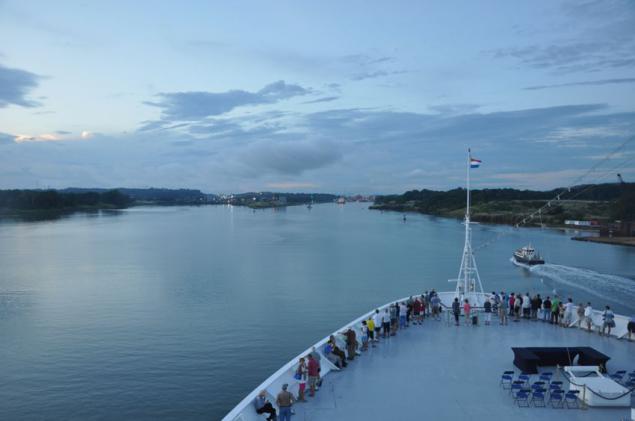
To the left of the existing two-strand locks since 2007 to build additional third line of locks of the Panama Canal.
They will be far more present and will increase the maximum size and draft of ships that can go through the channel. If the current gateways have dimensions of 304.8 x 33.5 and 12.8 meters depth, the new - respectively 427 x 55 x 18.3. In addition to the construction of the second gateway, now under expansion and deepening of the fairway on the watershed recess Culebra (Culebra), so that all along the channel was made possible two-way ship traffic (now the movement and locking on the Panama Canal is essentially a one-way - first, there is a group of vessels in one direction, then in reverse, and the expenses of the Court on the wider lake sections of the route). After the end of the scale reconstruction capacity of the Panama Canal will double.
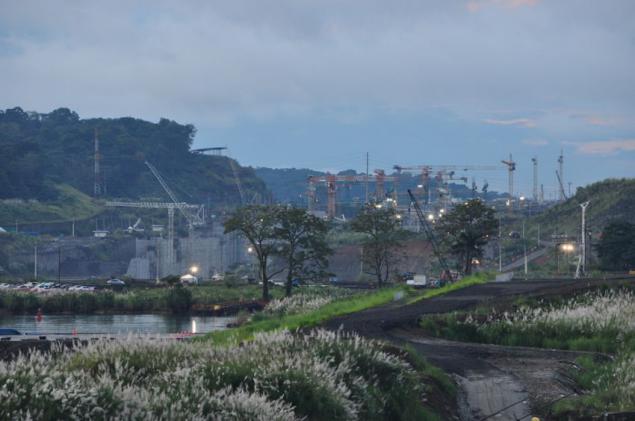
Old and new locks of the Panama Canal


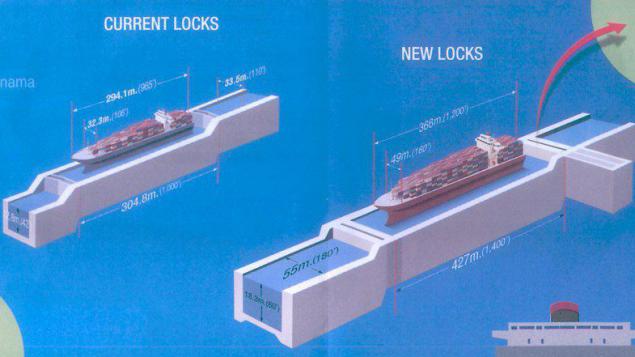
Plan route
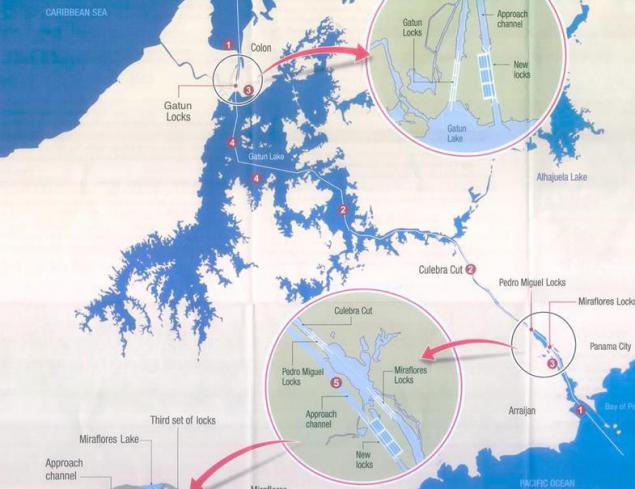
At 6-30 we are approaching the gateways Gatun. Vessel traffic in one of the most important transport connections world goes continuously from the nose "Zaandam" show how we face the ladder locks raised four vessels, two in each thread.
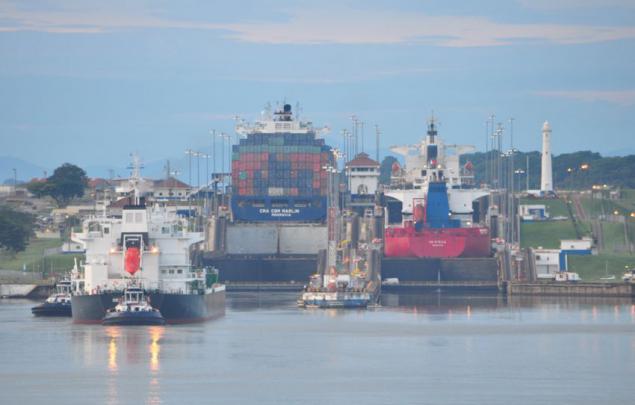
On the banks of the canal are huge gate for the second phase of construction of locks - they are made in Italy and have been delivered to the channel recently, in late August 2013.
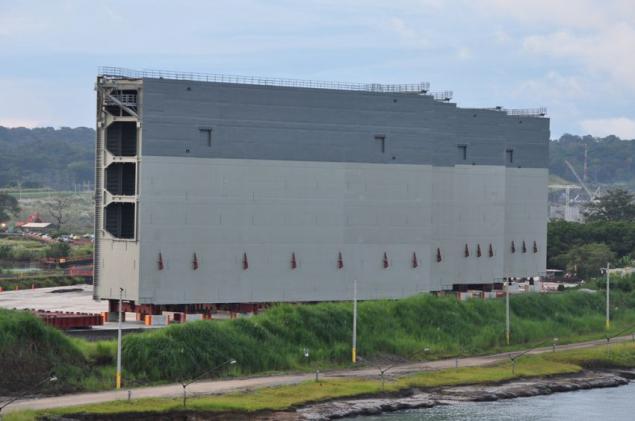
Match the first gateway. Floppy marine vessels moving from cell to cell by means of special locomotives, which are attached and tensioned moorings. Locomotives with fixed them taut moorings accompany the vessel with four sides (from the bow and stern on each side) - thus made perfectly clear the huge ships docked in very small compared to the size of their camera. Moorings with locomotives on board are served by a boat.
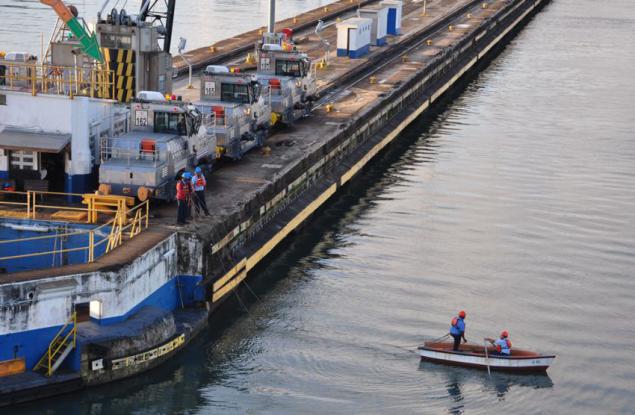
Moorings fixed - let's go! :)
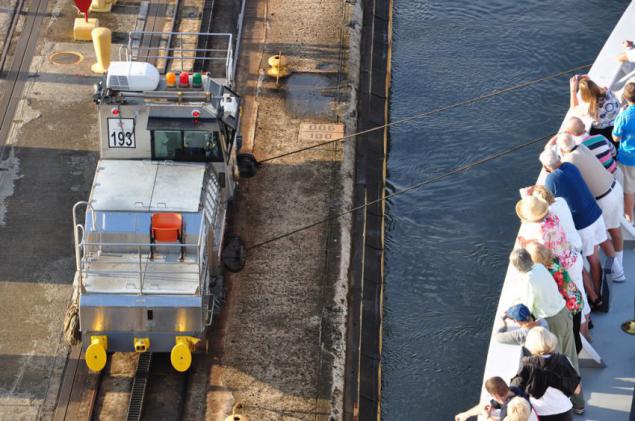
Go to the first lock chamber - trial raised from the Caribbean to the watershed area in three-step Gatun locks. The total lifting height - 26 meters. Accordingly, a little less than nine meters on stage. But on board the huge sea liner that the penalty is not perceived by a significant drop.
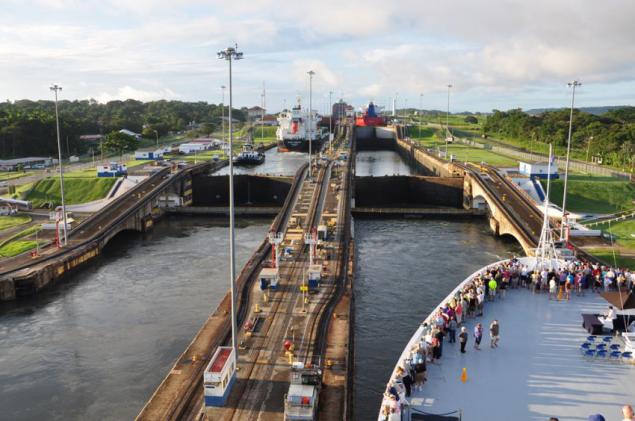
On the decks incredible hype!
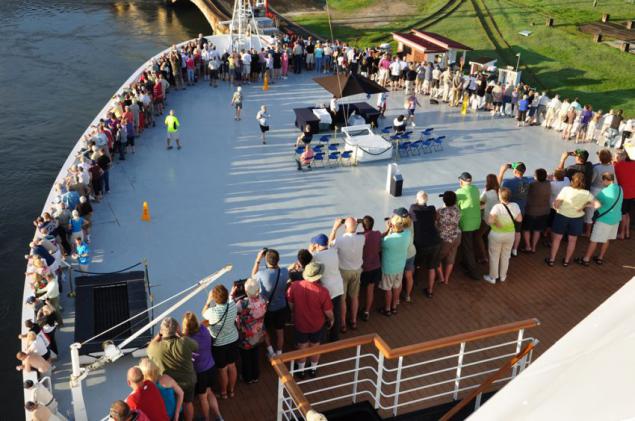
After 1999 the United States finally went to the Panama Canal, a unique structure is completely self-contained and serviced Panama. The channel is in good hands! :)

Lokomotiv, Exciting boat from the stern to starboard, deftly climbs upward. Who closed the gates and start locking.
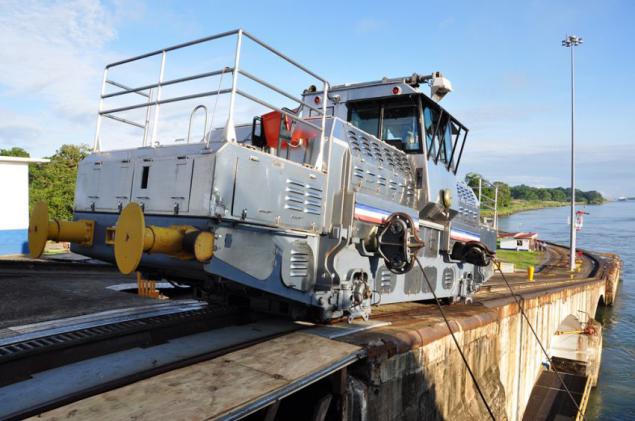
After rising in the first, go to the second chamber.

The Gatun locks installed one of the webcams of the Panama Canal, which in the real-time broadcast picture on the internet. At this point, many of my friends and colleagues look like we are on gateways. Here is slowly rising on the Atlantic slope of Panama Canal «Zaandam» side. :)

After finishing third in the locking chamber, «Zaandam» rises to the level of the watershed area of the channel. With stern stunning views down the stairs leaving locks and climbing on it for our ships. It will be exciting! Far below stretches expanse of the Caribbean Sea. And we - the Pacific Ocean. Goodbye, Atlantic! :)
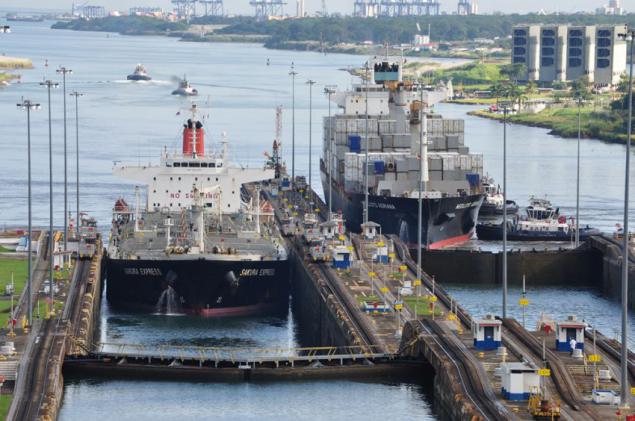
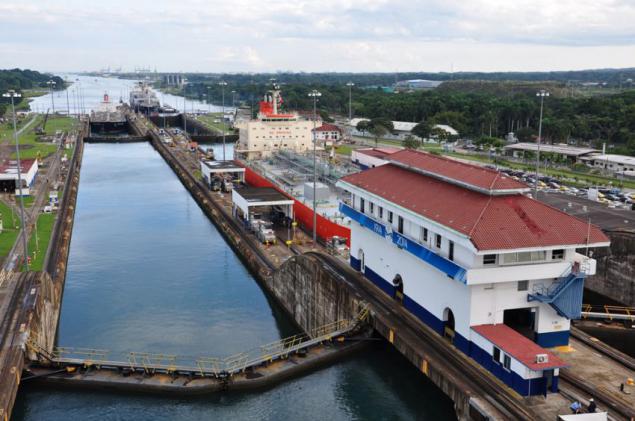
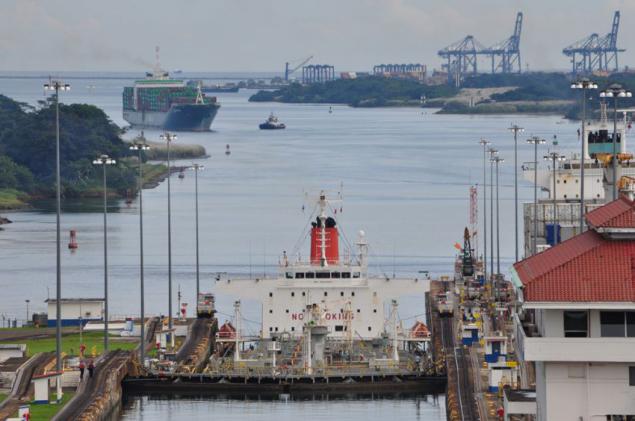
After rising in the Gatun locks, the ship enters the same name lake. Gatun Lake - actually a large reservoir formed by a dam on the watershed of a major on the river Chagres (Chagres), which is clearly visible to starboard.
From Gatun Lake water channel power occurs. These channels, whose body of water, feeding them with water, is on the watershed area from which the water is distributed to both the gravity of the slope, called channels with natural power (samotёchnye). In our country it is the Volga-Baltic and the White Sea-Baltic canals.

At Gatun Lake is another raid ships waiting their turn in locks and locking pending completion of those who goes to meet him. When it was put into operation the second phase of the Panama Canal, traffic on the entire length of the route will be completely bilateral.
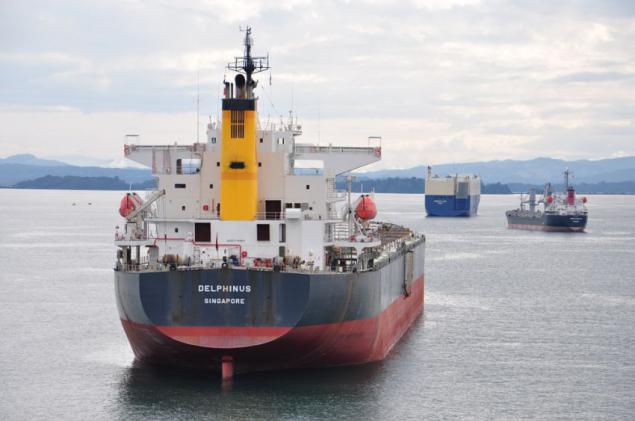
Way of Gatun reservoir is about half the length of the Panama Canal. We admire the surrounding scenery from the deck of the equatorial belt.
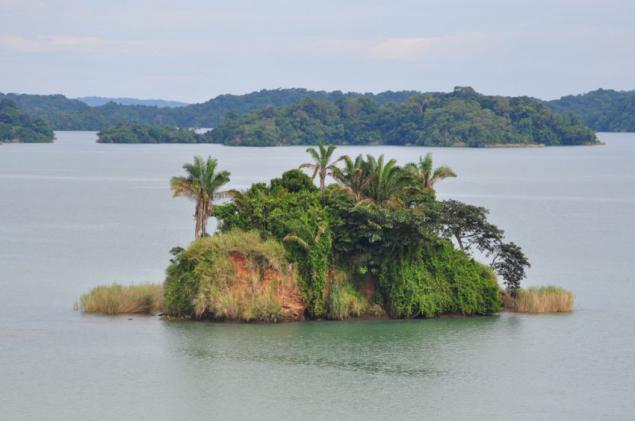
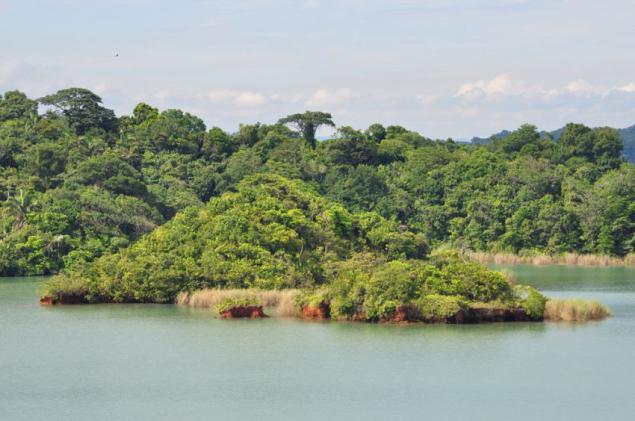
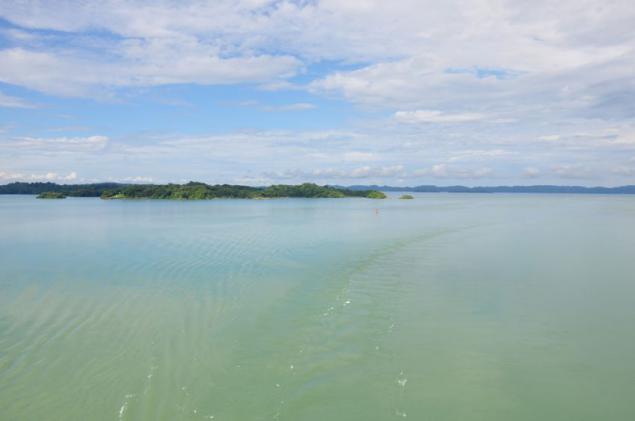
The fairway is quite narrow and winding. Water road marked with special buoys.
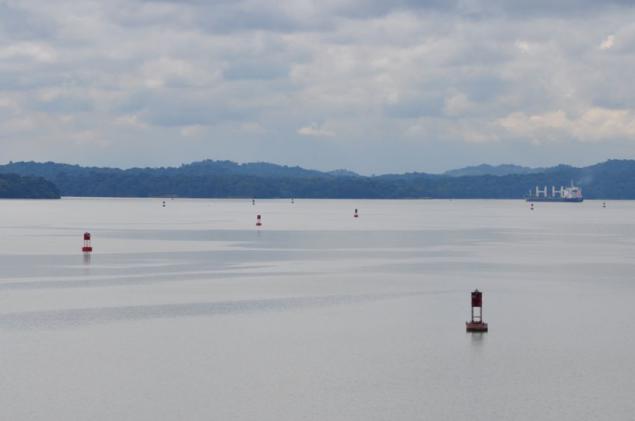
Reservoir Gatun discrepancy occurs ships going in opposite directions. Towards goes convoy in the morning the last slope of the Pacific gateway and now heading towards the Atlantic slope of the channel. Very close by, large tankers, bulk carriers, container ...
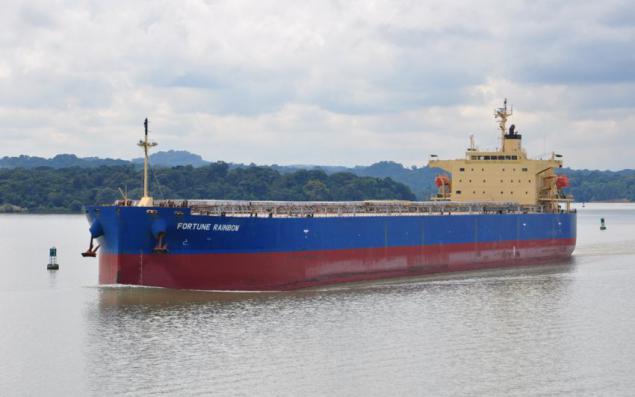
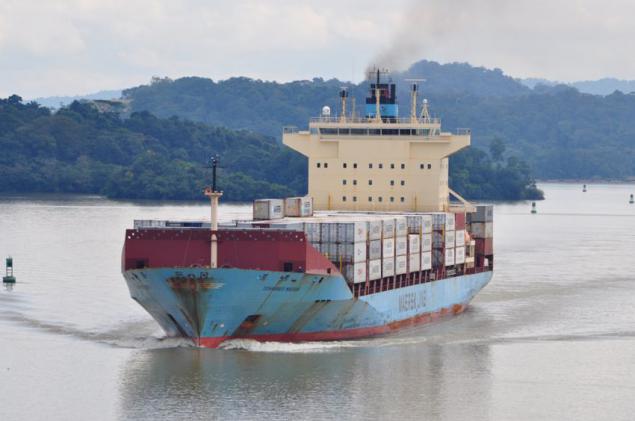
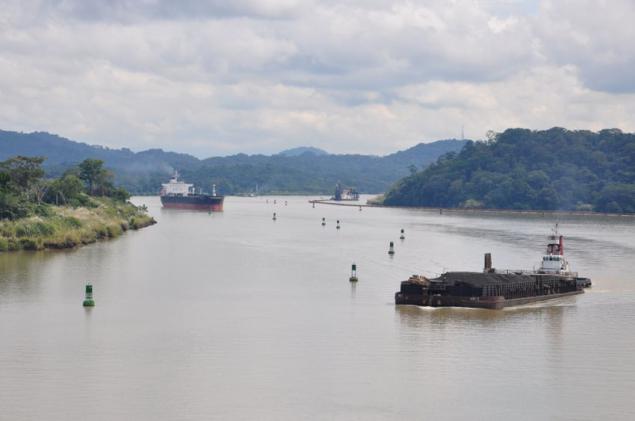
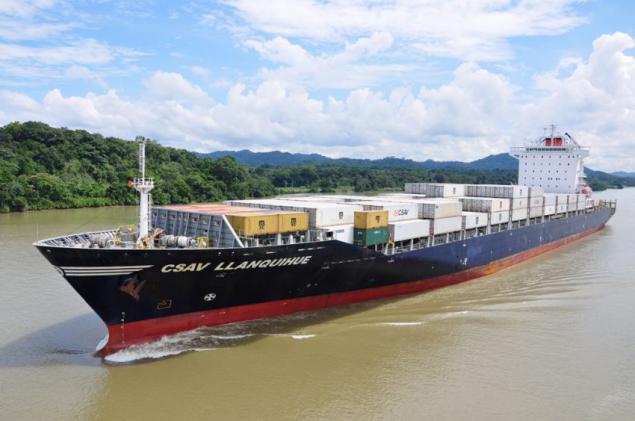
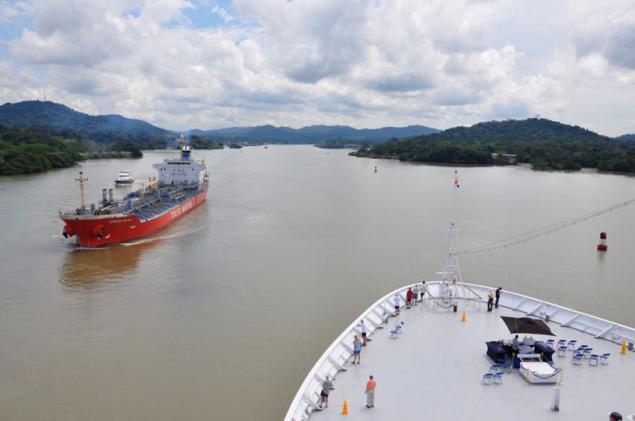
With bridges oncoming cargo ships too with interest the «Zaandam». Passage cruise ships through the Panama Canal - a rare event.
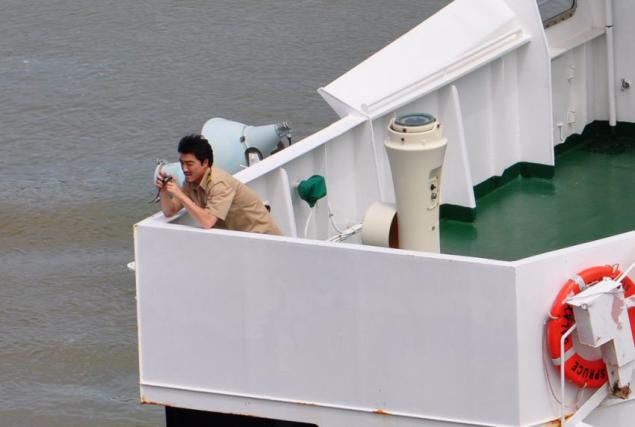
On the left you can see on the board the confluence of the Chagres, which crosses the bridge. Gatun Dam is over. The trail passes the channel in an artificially dug excavation in Culebra (Culebra cut).
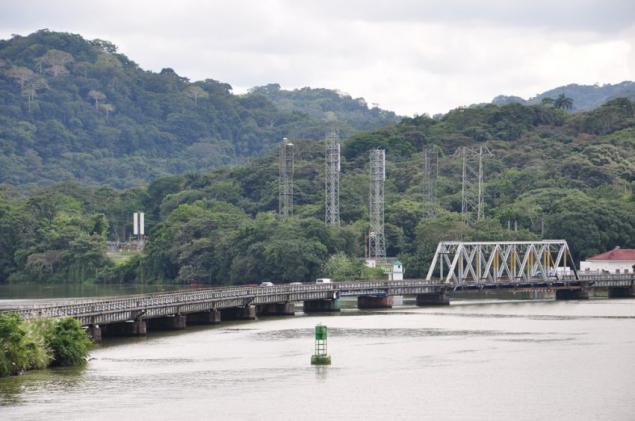
Along the route of the Panama Canal is a railway on which the containers are transported from the Atlantic to the Pacific port and vice versa. Sometimes her shuttle and tourist trains.

In some areas of the court go through the channel, accompanied by tugboats. On the Panama Canal operates its entire fleet of special.
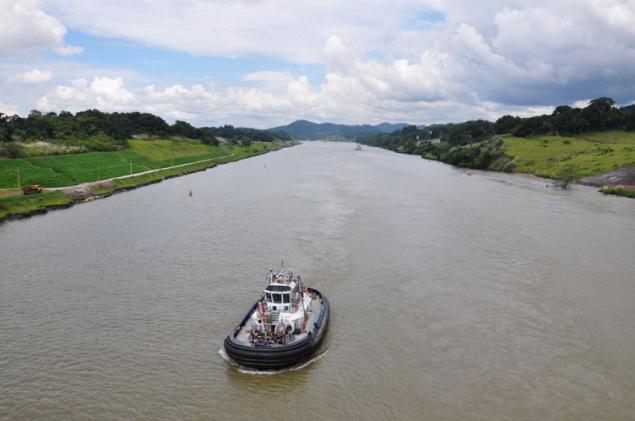
In the place where the seizure Culebra crosses the high mountain range, the shores rise steeply up the steps, and in the distance we can already see cable-stayed bridge Centennial (Centennial Bridge). It was built in 2004 and was the second permanent bridge across the canal. Among other things, the bridges over the Panama Canal connects two continents - let us not forget that the Panama Canal is not only binds the two oceans, but also separates the two Americas. The motto of Panama and the Panama Canal, «A Land Divided - A World United», I think, is clear and without translation. Who is on the starboard side we have North America, and on the left - South. :)
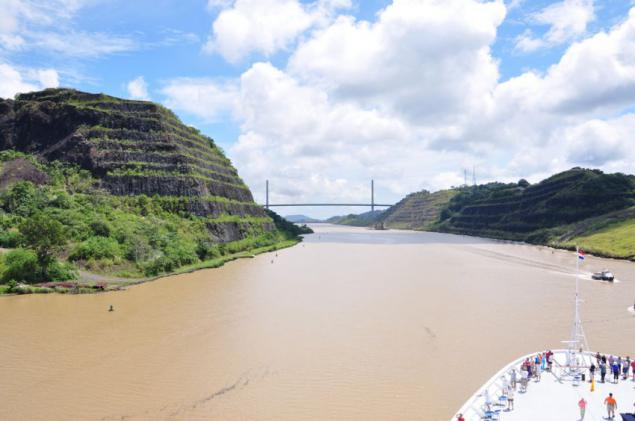
. Towering stone terraces and fortified with powerful anchors slopes recess at this point remind some fantastic Maya pyramid. In principle, in its grandeur the Panama Canal is quite comparable to their construction. The volume of rock developed with the creation of the recess Culebra, by volume equal to 63 pyramids of Cheops in Egypt.
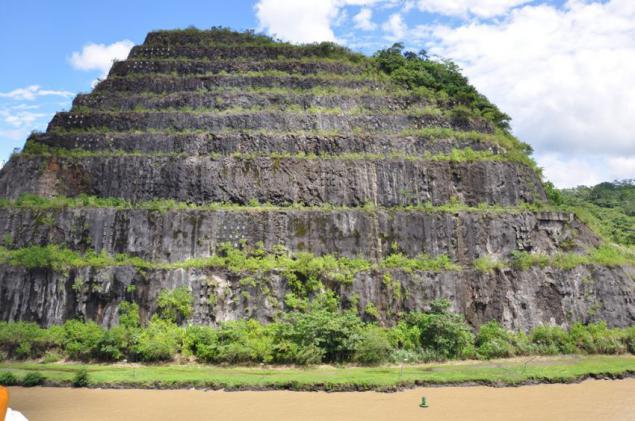
The bridge remains behind.

Shortly after the bridge canal watershed land ends and begins the descent to the Pacific Ocean, which the court also overcome three 9-foot steps. But the Pacific slope of a little more than a gentle - if on the Atlantic slope of all three stages are consecutive in the Gatun locks, there are two groups of gateways - Pedro Miguel (Stage 1) and Miraflores (2 steps), separated by an intermediate small pond. So we go in the Pedro Miguel locks.

Around the same form it opens and from the bridge. In this perspective, clearly shows how narrow airlock when compared with the colossal dimensions of ocean-going vessels. Even with a guide boat locomotives from skippers are required pinpoint accuracy. All vessels are on a channel with a group of local pilots.

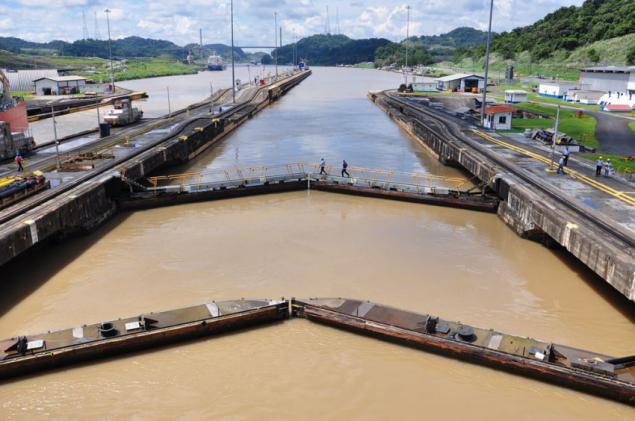
In parallel to the camera locomotives give birth tanker «Emerald Express».

At this time, on his decks.

Finished locking in Pedro Miguel locks, «Zaandam» comes in a small lake of Miraflores, as well as Lake Gatun, formed by a dam. Here we will have to wait a bit - on a parallel thread locks towards us dragging a huge floating crane, and for some time the court are only one thread.

We leave in the water area and stop. We'll have to wait half an hour before reaching the ship before us proshlyuzuetsya in the two chambers, and it is our turn.
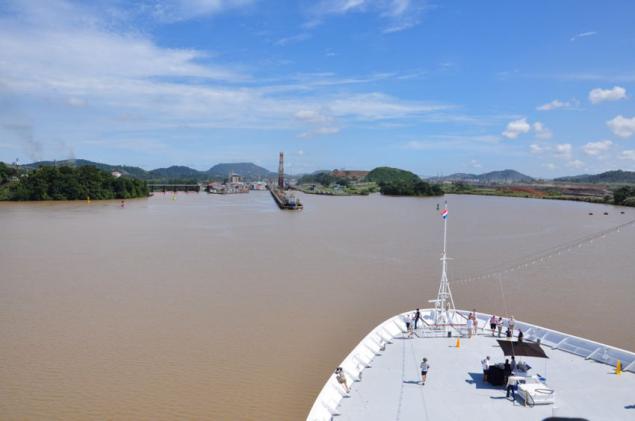
Marching behind us and are waiting for the court - a small tube! :)
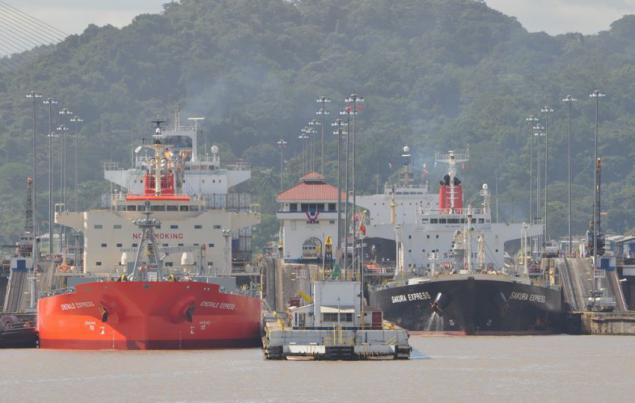
The left is a dam on the river, forming a reservoir of Miraflores.
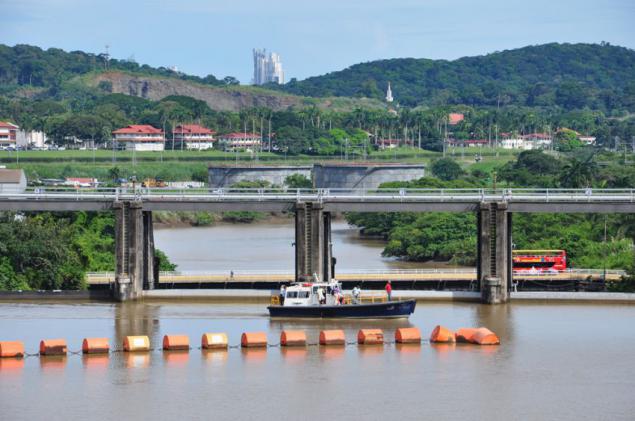
Finally, the camera locks are released and are ready to take our ship. The arrow shows the skippers, which of the two lines to go.
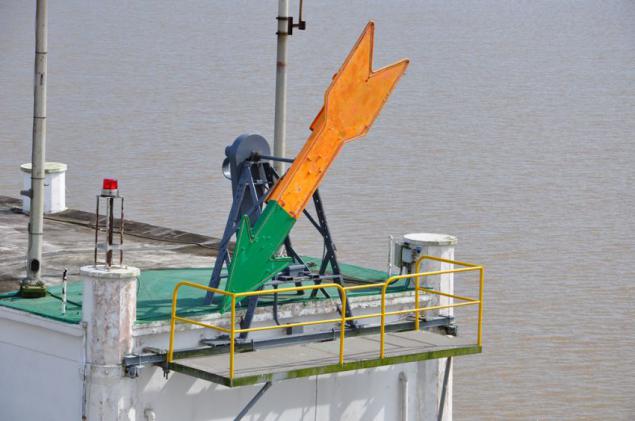
Go into the left chamber and meet us in the right camera lift, finally, slowly takes a huge floating crane, "culprit" cork. Now the locking process again goes much faster.
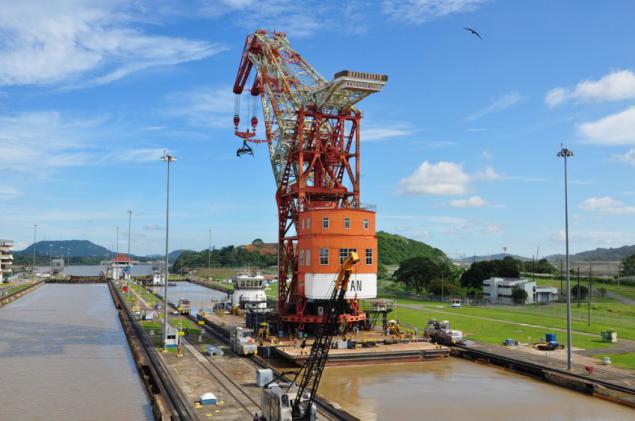
Near the top left of the camera is a tourist center in the Panama Canal. There are a number of large open spaces where anyone can look at going through the locks of the court.

ut also a webcam and from which our ship is seen in the biggest-channel. Separated from the crowd, you can pose chic to say hello to friends and not sleeping at midnight Motherland! At this point on the part we look like this. :)
Saying goodbye to friends, disappear from view cameras. Now I'll see you in two weeks at home, and yet «Zaandam» sent to the last chamber Miraflores Locks, and then leave the Panama Canal, the Pacific Ocean will be released and will continue to cruise along the coast of South America.
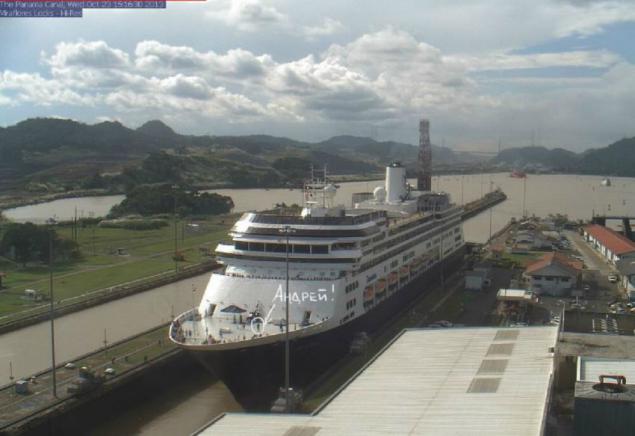
:)
The first real attempt to build the Panama Canal was undertaken by the French in 1879 under the leadership of Ferdinand de Lesseps, diplomat and head of the project of the Suez Canal, which was opened shortly before, in 1869. But the construction of the Panama Canal was much more challenging. In 1889, the French project went bankrupt - too complicated was the challenge that was thrown Panamanian jungle with its tropical storms, impassable swamps and at the same time rocky ground, floods and that the most terrible, deadly epidemics of malaria, yellow fever, plague, typhus and other diseases that claimed the lives of about 20 thousand people in the first campaign.
Then, for the construction of the Panama Canal took States. The United States was interested in reducing the waterway from the ports of California to its Atlantic coast, and most importantly, the Panama Canal was a huge military significance - he allowed almost instantly throw the fleet from one ocean basin to another, which greatly increased the power and influence in the world States. In 1903, the United States bought the Panamanian project from the French secured Panama's independence from Colombia, who did not want to give the Americans the Canal Zone in essentially unlimited time, and then signed a formal agreement with the new Panamanian government (which is, again, the Frenchman Philippe-Jean Byuno -Varilya, who was one of the main participants of the first draft of the bankrupt). United States agreed to provide 5-kilometer zone on each side of the canal in perpetuity (ie, essentially forever), and the exclusive right to occupy a territory outside the zone as part of any measures for the protection of the waterway. Thus, the announcement channel neutral and guarantee free passage through the channel of the military and merchant ships of all nations both in peacetime and in time of war to destroy the US reservation that these regulations will not apply to those measures which the United States deemed it necessary to take for the protection of Panama and maintaining order in the channel. In fact, during the war, which would be attended by the US, to strengthen their military inevitably deprive other belligerents possible to use the channel on an equal footing.
The chief engineer of the Panama Canal was John Frank Stevens. Taking into account the errors of the French, the Americans in the first place made great steps to disinfect the construction zone and the prevention of tropical diseases. It has been changed and the project - the project of the French Panama Canal, as well as Suez, was supposed to build on the same level with the oceans, without locks. It took enormous amount of excavation work on the watershed area of the track. American engineers have changed the project and offered the sluice channel with three levels of locks on each side and watershed areas at an altitude of 26 meters above the ocean. On the watershed Gatun Reservoir was created, in which the court with the Atlantic side up into the Gatun locks, and from the Pacific - in Pedro Miguel locks and Miraflores.
The Panama Canal was opened in 1920 and for many years remained under US control. In the Canal Zone were dozens of US military bases, there were about 50 thousand military and civilian personnel. Over time in Panama began to grow more and more discontent regarding this, and in 1977 signed an agreement on the gradual transfer of the Panama Canal from the United States to Panama. In fact, this process took more than two decades, and finally the zone of the channel came into the possession of Panama December 31, 1999.
The length of the channel 81, 6 kilometers, of which 65 km 2 of land, and in fact still 16, 4 kilometers along the bottom of the approach and the Panama Limon bays to deep water. Court dimensions that they can pass through the Panama Canal, the courts are called class «Panamax». This standard is the basis for ships until the early 1990s, when the active construction of ships of class «Post-Panamax» (mainly tankers), whose dimensions are larger than the size of locks of the Panama Canal. Today, the cost of the passage of the Panama Canal depends on the type and size of vessel, ranging from $ 800 for small boats up to 500 000 dollars for the biggest ships. There were anecdotes - so, in 1928 with the famous American traveler Richard Halliburton, swam across the channel from one ocean to the other, they took 36 cents. :)
Panama Canal today - is not only one of the world's major transport links and major tourist attractions of Panama. When the Panama Canal now operates a major tourist center at the Miraflores Locks, where several special viewing areas to watch the floodgates and pass their vessels, while at the speaker tells about each vessel, its route and that it carries. There are other tours - by bus along the canal, rail, walking in small boats; in some standard cruises in the Caribbean cruise ships through the locks of Gatun on the Atlantic slope of the rising channel to the watershed area, and then sent back to the Caribbean (and willing tourists can walk the rest of the Panama Canal by boat as part of the tour). But, of course, the best, unique and entuziastsky way to see the Panama Canal - a transit pass him completely on a cruise ship, go to him from the Atlantic to the Pacific (or vice versa), and continue to cruise further into a very different ocean basin. Absolutely everything, even the most seasoned travelers prepare for the passage of the Panama Canal quite peculiar.
Just passing the Panama Canal takes an average of about 9 hours, not counting the time waiting ships on the huge sea raids on each side. Cruise ship, of course, there is a clear schedule, and sent to the channel immediately, out of the lineup. «Zaandam» approaches to the Panama Canal Zone around 5am. Entrance to the large waters of the approach of the Panama Canal from the Caribbean is marked by powerful beacons and is protected by kilometers of dykes. At the entrance to the channel in the roads waiting for their turn are dozens of ships of all sizes and colors, brightly lit at night. And on the shore of the bay is the city and port of Colon, with a huge container terminal. The same container terminal is located, and the other input channel - thus, container class «Post-Panamax» (ie larger than locks of the Panama Canal) unloaded in these input ports, cargo containers transported by passing along the channel rail and then on the other side of the sink for new ships, and continue the route. Also the railway between the port is used for partial unloading of large container ships passing through the canal, to reduce their deposits.

Five in the morning, just beginning to get light, but most tourists already on their feet: the entrance to the Panama Canal - one of the central events of the cruise! We go in the water area of the approach, with the side to see the lights predawn Port Columbus.



Having a group of pilots on board, heading to the door - from the Caribbean Panama Canal begins three-stage ladder Gatun locks, in which the Court raised from the level of the Atlantic Ocean in the watershed portion of the channel.

To the left of the existing two-strand locks since 2007 to build additional third line of locks of the Panama Canal.
They will be far more present and will increase the maximum size and draft of ships that can go through the channel. If the current gateways have dimensions of 304.8 x 33.5 and 12.8 meters depth, the new - respectively 427 x 55 x 18.3. In addition to the construction of the second gateway, now under expansion and deepening of the fairway on the watershed recess Culebra (Culebra), so that all along the channel was made possible two-way ship traffic (now the movement and locking on the Panama Canal is essentially a one-way - first, there is a group of vessels in one direction, then in reverse, and the expenses of the Court on the wider lake sections of the route). After the end of the scale reconstruction capacity of the Panama Canal will double.

Old and new locks of the Panama Canal



Plan route

At 6-30 we are approaching the gateways Gatun. Vessel traffic in one of the most important transport connections world goes continuously from the nose "Zaandam" show how we face the ladder locks raised four vessels, two in each thread.

On the banks of the canal are huge gate for the second phase of construction of locks - they are made in Italy and have been delivered to the channel recently, in late August 2013.

Match the first gateway. Floppy marine vessels moving from cell to cell by means of special locomotives, which are attached and tensioned moorings. Locomotives with fixed them taut moorings accompany the vessel with four sides (from the bow and stern on each side) - thus made perfectly clear the huge ships docked in very small compared to the size of their camera. Moorings with locomotives on board are served by a boat.

Moorings fixed - let's go! :)

Go to the first lock chamber - trial raised from the Caribbean to the watershed area in three-step Gatun locks. The total lifting height - 26 meters. Accordingly, a little less than nine meters on stage. But on board the huge sea liner that the penalty is not perceived by a significant drop.

On the decks incredible hype!

After 1999 the United States finally went to the Panama Canal, a unique structure is completely self-contained and serviced Panama. The channel is in good hands! :)

Lokomotiv, Exciting boat from the stern to starboard, deftly climbs upward. Who closed the gates and start locking.

After rising in the first, go to the second chamber.

The Gatun locks installed one of the webcams of the Panama Canal, which in the real-time broadcast picture on the internet. At this point, many of my friends and colleagues look like we are on gateways. Here is slowly rising on the Atlantic slope of Panama Canal «Zaandam» side. :)

After finishing third in the locking chamber, «Zaandam» rises to the level of the watershed area of the channel. With stern stunning views down the stairs leaving locks and climbing on it for our ships. It will be exciting! Far below stretches expanse of the Caribbean Sea. And we - the Pacific Ocean. Goodbye, Atlantic! :)



After rising in the Gatun locks, the ship enters the same name lake. Gatun Lake - actually a large reservoir formed by a dam on the watershed of a major on the river Chagres (Chagres), which is clearly visible to starboard.
From Gatun Lake water channel power occurs. These channels, whose body of water, feeding them with water, is on the watershed area from which the water is distributed to both the gravity of the slope, called channels with natural power (samotёchnye). In our country it is the Volga-Baltic and the White Sea-Baltic canals.

At Gatun Lake is another raid ships waiting their turn in locks and locking pending completion of those who goes to meet him. When it was put into operation the second phase of the Panama Canal, traffic on the entire length of the route will be completely bilateral.

Way of Gatun reservoir is about half the length of the Panama Canal. We admire the surrounding scenery from the deck of the equatorial belt.



The fairway is quite narrow and winding. Water road marked with special buoys.

Reservoir Gatun discrepancy occurs ships going in opposite directions. Towards goes convoy in the morning the last slope of the Pacific gateway and now heading towards the Atlantic slope of the channel. Very close by, large tankers, bulk carriers, container ...





With bridges oncoming cargo ships too with interest the «Zaandam». Passage cruise ships through the Panama Canal - a rare event.

On the left you can see on the board the confluence of the Chagres, which crosses the bridge. Gatun Dam is over. The trail passes the channel in an artificially dug excavation in Culebra (Culebra cut).

Along the route of the Panama Canal is a railway on which the containers are transported from the Atlantic to the Pacific port and vice versa. Sometimes her shuttle and tourist trains.

In some areas of the court go through the channel, accompanied by tugboats. On the Panama Canal operates its entire fleet of special.

In the place where the seizure Culebra crosses the high mountain range, the shores rise steeply up the steps, and in the distance we can already see cable-stayed bridge Centennial (Centennial Bridge). It was built in 2004 and was the second permanent bridge across the canal. Among other things, the bridges over the Panama Canal connects two continents - let us not forget that the Panama Canal is not only binds the two oceans, but also separates the two Americas. The motto of Panama and the Panama Canal, «A Land Divided - A World United», I think, is clear and without translation. Who is on the starboard side we have North America, and on the left - South. :)

. Towering stone terraces and fortified with powerful anchors slopes recess at this point remind some fantastic Maya pyramid. In principle, in its grandeur the Panama Canal is quite comparable to their construction. The volume of rock developed with the creation of the recess Culebra, by volume equal to 63 pyramids of Cheops in Egypt.

The bridge remains behind.

Shortly after the bridge canal watershed land ends and begins the descent to the Pacific Ocean, which the court also overcome three 9-foot steps. But the Pacific slope of a little more than a gentle - if on the Atlantic slope of all three stages are consecutive in the Gatun locks, there are two groups of gateways - Pedro Miguel (Stage 1) and Miraflores (2 steps), separated by an intermediate small pond. So we go in the Pedro Miguel locks.

Around the same form it opens and from the bridge. In this perspective, clearly shows how narrow airlock when compared with the colossal dimensions of ocean-going vessels. Even with a guide boat locomotives from skippers are required pinpoint accuracy. All vessels are on a channel with a group of local pilots.


In parallel to the camera locomotives give birth tanker «Emerald Express».

At this time, on his decks.

Finished locking in Pedro Miguel locks, «Zaandam» comes in a small lake of Miraflores, as well as Lake Gatun, formed by a dam. Here we will have to wait a bit - on a parallel thread locks towards us dragging a huge floating crane, and for some time the court are only one thread.

We leave in the water area and stop. We'll have to wait half an hour before reaching the ship before us proshlyuzuetsya in the two chambers, and it is our turn.

Marching behind us and are waiting for the court - a small tube! :)

The left is a dam on the river, forming a reservoir of Miraflores.

Finally, the camera locks are released and are ready to take our ship. The arrow shows the skippers, which of the two lines to go.

Go into the left chamber and meet us in the right camera lift, finally, slowly takes a huge floating crane, "culprit" cork. Now the locking process again goes much faster.

Near the top left of the camera is a tourist center in the Panama Canal. There are a number of large open spaces where anyone can look at going through the locks of the court.

ut also a webcam and from which our ship is seen in the biggest-channel. Separated from the crowd, you can pose chic to say hello to friends and not sleeping at midnight Motherland! At this point on the part we look like this. :)
Saying goodbye to friends, disappear from view cameras. Now I'll see you in two weeks at home, and yet «Zaandam» sent to the last chamber Miraflores Locks, and then leave the Panama Canal, the Pacific Ocean will be released and will continue to cruise along the coast of South America.

:)
